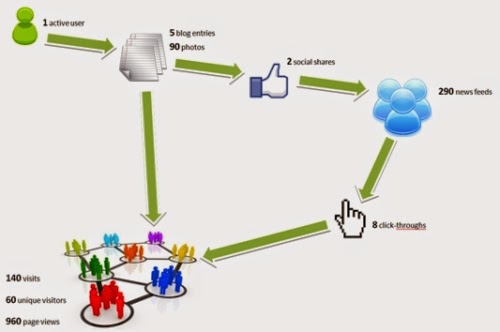Primarily,
one has to mention that the blogs and wikis belong nowadays to the most
important tools that help to enhance business of many companies both internally
and externally. In most cases, the blogs of particular companies has 12
goals for business blogging in order to show that the organization has a human face and is ready
to communicate; represent the CEO and other senior managers as progressive
thinkers and competent providers of information about the company, the industry
and the business community in general; improve
communication with customers, including potential by maintaining dialogue;
create a simple and affordable means of support; increase the effectiveness of
PR-service organization; promote the brand, product or service to consumers;
establish and maintain an open dialogue with important company people and
organizations, such as current and potential employees and customers, and
suppliers, the media, the business community, the public in general, potential
business partners; conduct surveys and immediately receive responses from
readers; earn revenue from advertising and sponsorship; use business blogs
instead of sending e-mails on a subscription and mass mailings; and attract new employees
(Wong,
2014). These goals are similar
and related to the 10 value levers published by McKinsey.
One has
to mention of the global telecommunication company entitled AT&T (American Telephone and Telegraph
Company) that supplies various companies, businesses and government agencies
with different kinds of data, media sources and e-telecommunications, and it is
one of the biggest companies in Texas that provides the society with mobile
phones and broadband subscription television.
As for the blogs, the corporation has different types of blogs that are
designed for various purposes. Thus, there is a Consumer Blog where the people who
are leading blogs are communicating with consumers. Moreover, the news about
the company and their services are given. To add more, another kind of blog is
called Networking Exchange
Blog. It gives the possibility for people to share, join, and innovate with
the network and technology experts, and; what is more, discover new methods to
power their business. The company raises the business issues that are topical
for their readers and the latter have the opportunity to share comments and
express their point of view. This makes the website of AT&T more popular
and; therefore, people are more likely to believe in professionalism of
this company.
Besides, one more blog type is called Reimagine Business Blog where
the heads of the AT&T are telling of the keys of the success of the company
and sharing their experience with blog readers. Another blog that is related to
businesses to give some useful solutions is the Digital Care eco system, and
it consists of 2 types of social media. The first tool includes: Facebook, Twitter and YouTube. The second tool is a
portal where customers can share their experiences with each other.
In
Addition, there is also Innovation
Space Blog where all the latest news in the sphere of technique is
described that is not only linked to the AT&T business, but those products
that may gain the people’s interest. Thus, by providing the society with the
necessary information, the organisation makes more people read their blogs, and
gives students the opportunity to participate in different exchange programs
and hold various charity events such as Spurs
Community Programs.
To conclude, one has
to emphasize that businesses use blogs for various purposes as McKinsey
mentioned;
however, the main goal of AT&T Company is not only to promote their
services and goods, but to create lively communication with their readers,
support them with interesting information, conduct surveys and help people if
it is necessary. All these opportunities attract people from all over the world
and; as a result, AT&T is promoting its brand, products; engaging
stakeholders in its business and drawing the attention of mass media to its
company.
References
Attinnovationspace.com,.
(2014). AT&T - Blogs. Retrieved from http://attinnovationspace.com/
AT&T
Networking Exchange Blog,. (2014). AT&T Networking Exchange | AT&T Blog
| Technology Blog. Retrieved from http://networkingexchangeblog.att.com/
Att.com,.
(2014). AT&T Company Information | AT&T About Us. Retrieved from http://www.att.com/gen/investor-relations?pid=5711
Blogs.att.net,.
(2014). AT&T - Consumer News. Retrieved from http://blogs.att.net/consumerblog
Blogs.att.net,.
(2014). AT&T - Reimagine Business. Retrieved from http://blogs.att.net/reimaginebusiness
Wong, D. (2014). The
Why: 12 Distinct Goals for Business Blogging. The Huffington Post. Retrieved from http://www.huffingtonpost.com/danny-wong/the-why-12-distinct-goals_b_5651566.html











